If you buy through our links, we may earn an affiliate commission. This supports our mission to get more people active and outside.Learn about Outside Online's affiliate link policy
The Best Water Filters for Safe Backcountry Hydration
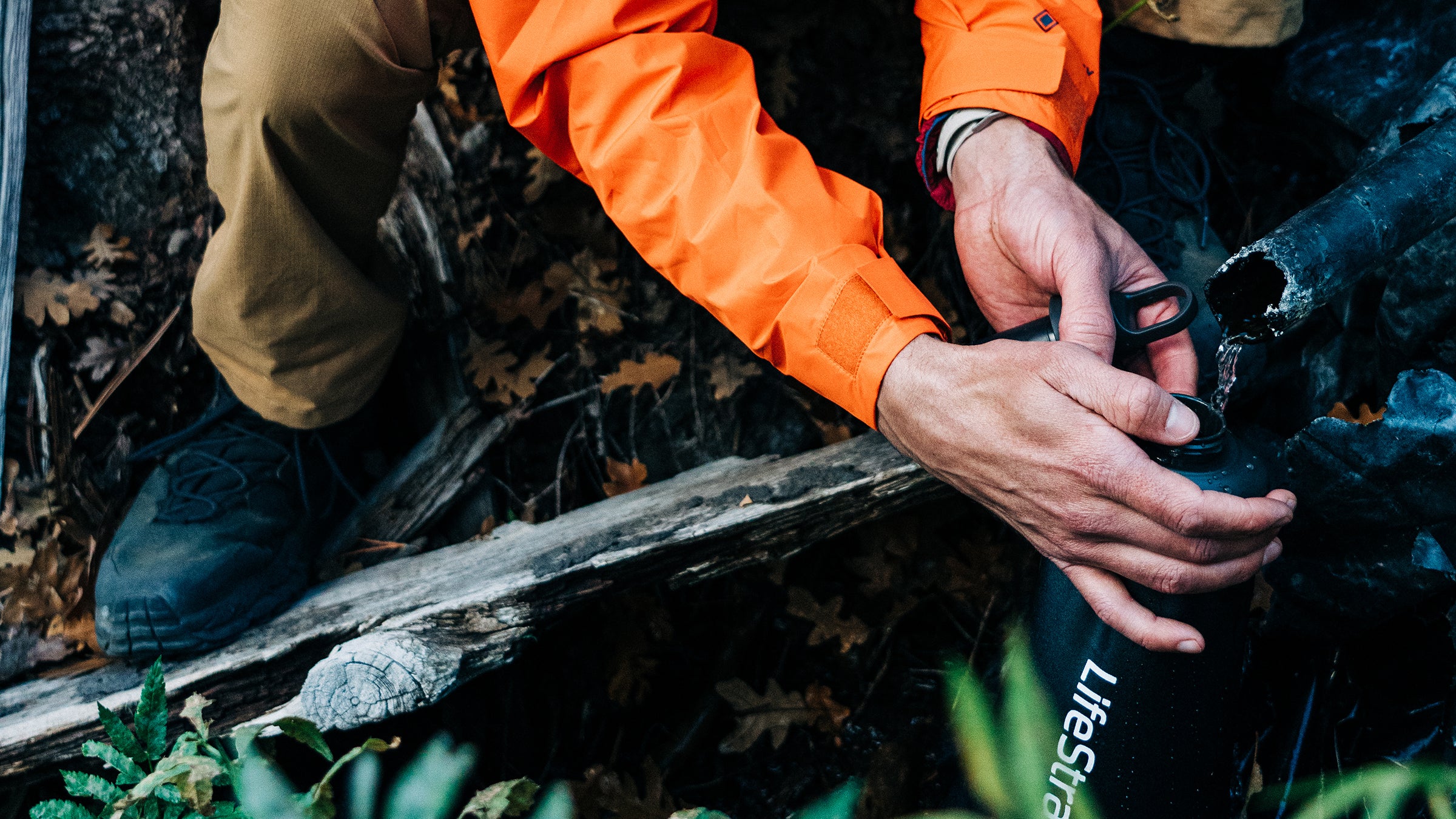
Outside editors testing Lifestraw's Peak Squeeze last summer (Photo: Evan Green)
Water filters are one of those gear items you don’t mess around with—there are few worse outcomes to a backpacking trip than a surprise parasite. To ensure you don’t bring home an uninvited guest, we dove deep into this year’s offerings to find water filters that not only keep you healthy, but do so quickly, efficiently, and with minimal finger numbness.
April 2025 Update:
At a Glance
- Best Squeeze Filter: HydraPak 42MM Filter Cap ($35)
- Most Versatile Filter: LifeStraw Peak Series Solo ($30)
- Best Press Filter: Grayl GeoPress ($100)
- Best for Really Bad Water: MSR Guardian Purifier ($400)
- Best Gravity Filter: Platypus QuickDraw 3L Gravity Filter ($90)
- Other Products We Tested
- How We Test
- How to Choose a Water Filter
- Meet Our Lead Tester
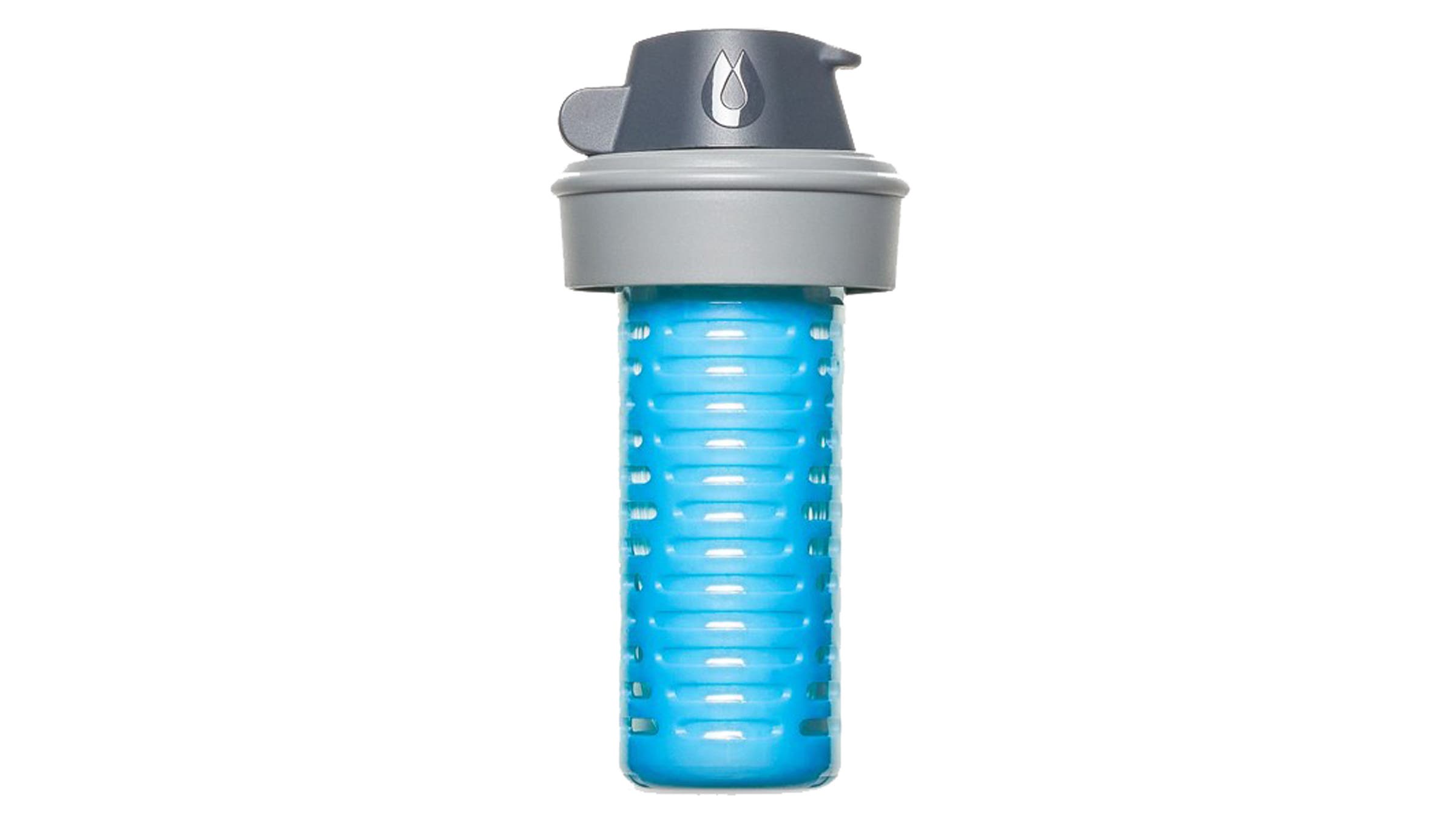
Best Squeeze Filter
HydraPak 42MM Filter Cap
Weight: 1.5 oz
Pros and Cons
⊕ Lightweight
⊕ Very fast
⊕ Easy to clean in the field
⊗ No option to replace filter alone
⊗ Short lifespan
⊗ Proprietary bottle compatibility
We love squeeze filters for their lack of moving parts, compact size, and low price point. And while almost all the big names in filtration have converged on nearly identical hollow-fiber technology in the last decade, HydraPak’s 42MM Filter Cap takes the throne for its class-leading flow rate and durable, smart cap design.
Until recently, HydraPak was best known for its thick, durable TPU squeeze pouches—a staple among backpackers and hikers who use both 28 and 42-millimeter filters from other brands. But for years, the brand manufactured filters for Salomon’s trail running-oriented soft flasks. Finally, in March 2023, HydraPak started producing its own backpacking-oriented version. (It’s nearly identical to Salomon’s except for the mouthpiece design.)
The HydraPak 42MM Filter Cap’s membrane is slightly longer than our previous leading squeeze filter, the Katadyn BeFree ($27), providing greater exposure to the hollow fibers. While the brand claims an already excellent flow rate of one liter per minute, our testers were able to squeeze a liter in just 30 seconds. “I filtered 20 liters of very dirty, silty water, and it was still going strong at one liter every 40 seconds,” says senior gear editor Benjamin Tepler after a week of backpacking in Washington’s North Cascades.
In addition to boasting one of the fastest flow rates we’ve seen from a squeeze filter, the HydraPak 42MM Filter Cap also boasts a fifty percent longer lifespan (1500 liters) compared to the Katadyn Befree. Note that neither of these numbers is particularly impressive compared to the 100,000 gallons that Sawyer’s Mini ($29) and Squeeze ($46) can handle. And because of its threading, this filter is only guaranteed by HydraPak to work with their 42-millimeter vessels (although it has worked for us on other brand’s 42-millimeter bags and bottles), so Smartwater devotees will have to look elsewhere.
Cleaning the HydraPak 42MM cap is easy in the field—simply swish it around in some clean water. Note that this isn’t equivalent to back-flushing on something like a Sawyer filter, but it does dramatically extend the filtering efficiency without requiring any extra equipment. (For more significant clogs, you’ll need to purchase a separate HydraPak “backflush tap.”)
We loved the filter’s simple mouthpiece, which incorporates a hard plastic nipple that twists open or closed, along with a sturdy hinged cap to keep it from getting contaminated or dusty. Some testers found the cap to be difficult to open with one hand or in cold conditions, but almost all preferred it to the flimsier disposable water bottle caps found on competing models.
The HydraPak 42 mm Filter Cap weighs just 43 grams, making it one of the lightest filters on the market. It also means that the weight penalty for bringing a second emergency filter is minimal.
While other brands are catching up with sturdier components and durable TPU bladders of their own, it’s hard to beat the one-two combo of the HydraPak 42 mm Filter Cap and one of the brand’s reservoirs for reliable hydration far from the trailhead.
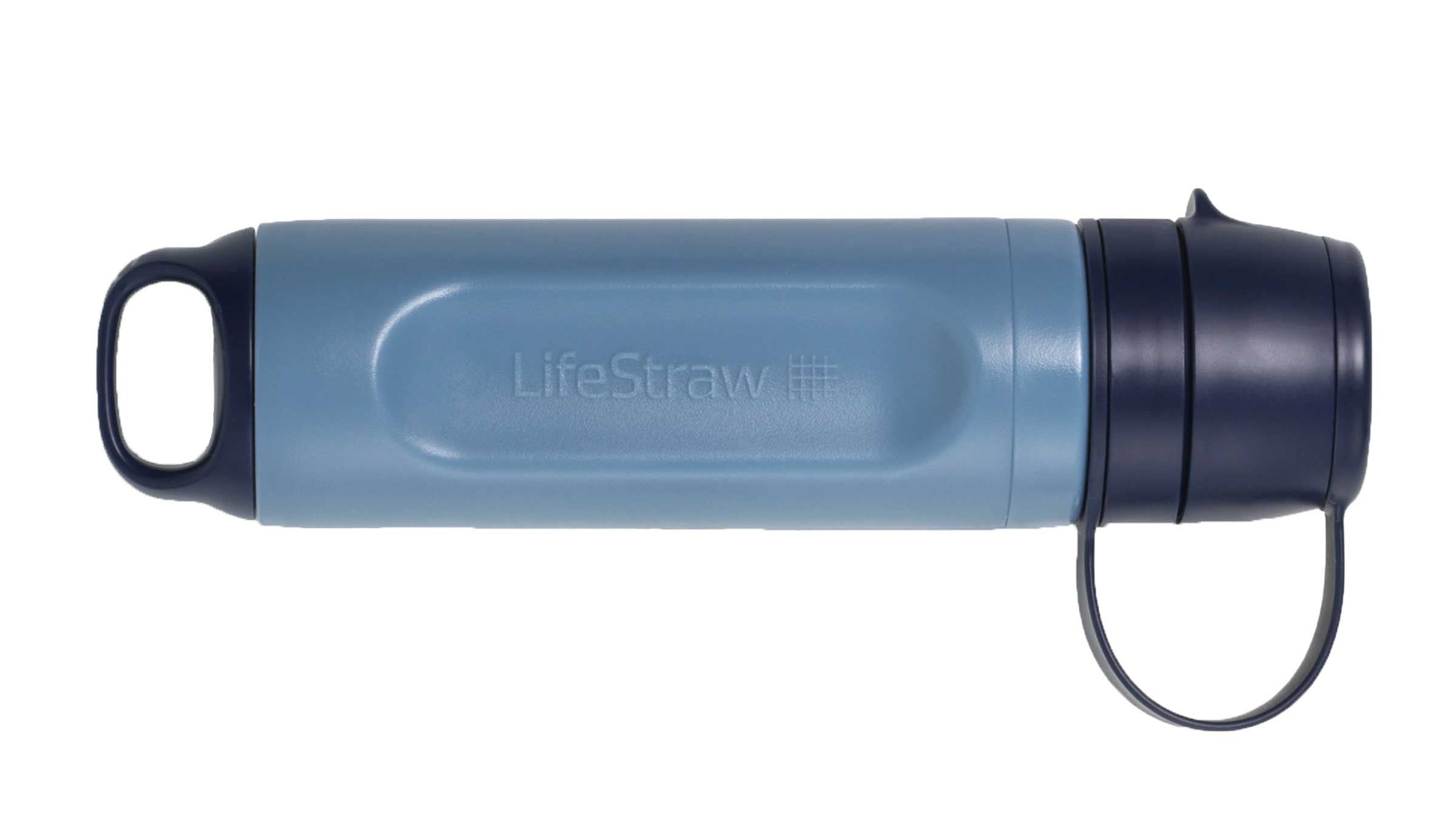
Most Versatile Filter
LifeStraw Peak Series Solo
Weight: 1.7 oz
Pros and Cons
⊕ Small
⊕ Lightweight
⊕ Compact
⊕ Comfortable
⊗ Average lifespan
While there are plenty of minimalist hollow fiber filters on the market, there are few that can function as a squeeze, straw, and gravity filter. The Peak Solo does all three with ease while boasting a high flow rate, light weight, and small form factor.
Smaller and lighter than its popular big sibling, the Peak Straw, the Solo is actually a clever repurposing of the same filter used in the majority of the brand’s newest lineup: By adding a removable bottom cap and a more comfortable tethered top cap to sip from, it can now switch between gravity/squeeze-filter and straw filter mode. It retains standard 28-millimeter threading for use with a variety of Smartwater-type water bottles and bags.
When tested against competitors, the Solo had the most comfortable mouthpiece and one of the fastest tested flow rates at just over two liters per minute when squeezed. The elimination of the standard hose connector on the “dirty” end facilitates a faster flow rate for sipping but also means that the Solo can’t be used as an inline filter, a deal-breaker for some backpackers.
Compared to its older sibling, the Solo is smaller, lighter, and more ergonomic, but with a $5 price penalty. Hot tip: folks who already own a LifeStraw product utilizing the Peak Series microfilter can purchase the top ($9) and bottom caps ($5), essentially converting it into the Solo.
This filter won’t win first place among the competition for any single attribute. It’s not the absolute lightest (1.7 ounces) or longest-lasting (2,000 liters) straw filter. That said, while most filters come with at least one hangup, the Solo is stellar in nearly every regard.
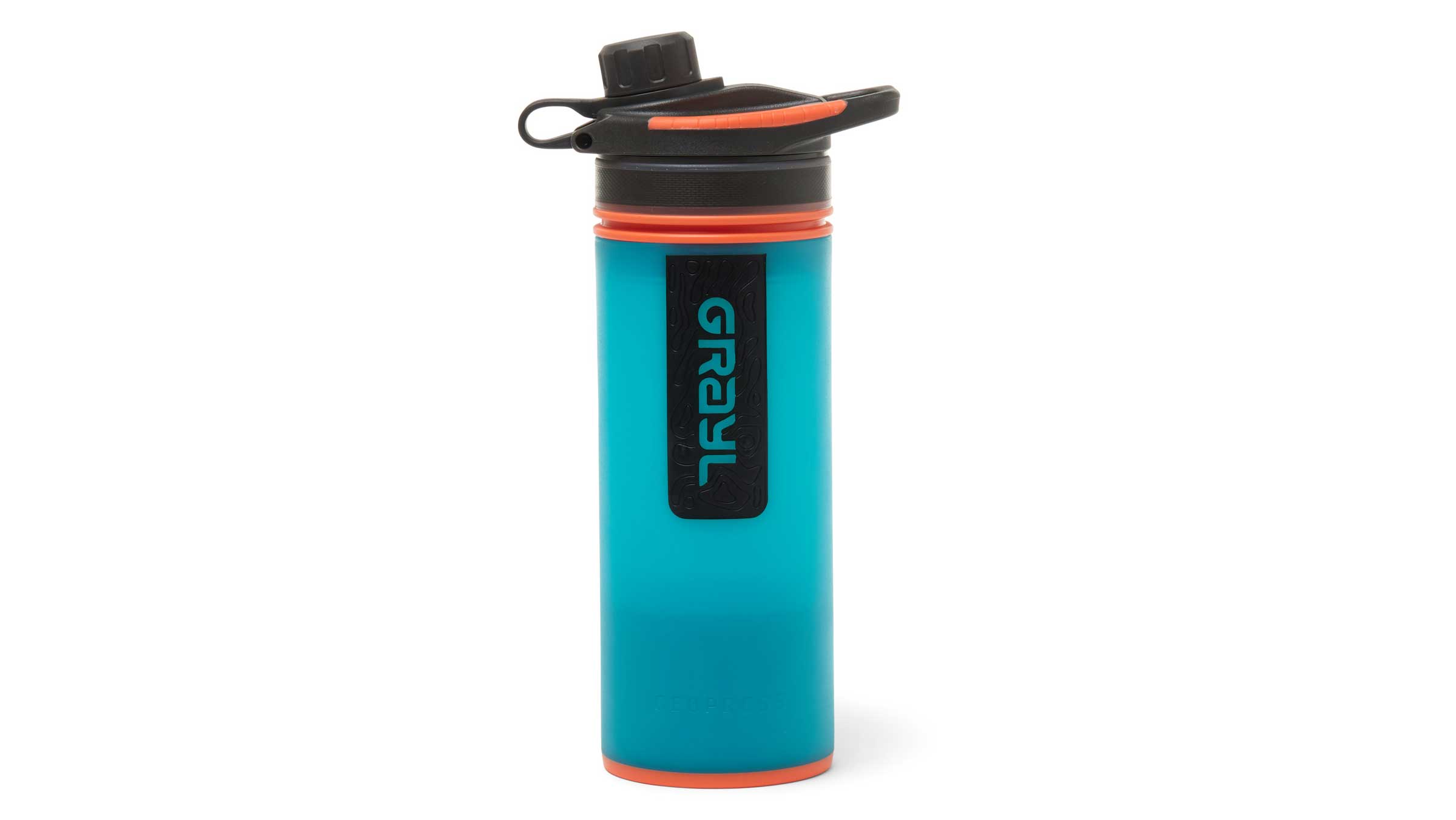
Best Press Filter
Grayl GeoPress
Weight: 15.9 oz
Pros and Cons
⊕ Lightning fast
⊕ Durable
⊗ Heavy
⊗ Limited by bottle size
⊗ Expensive replacement cartridges
We’re well-documented fans of hiking gear that’s simple and efficient. The GeoPress is both. This super handy water purifier is extremely easy to use and maintain, and it also doubles as a regular drinking vessel, negating the need to bring a separate bottle on the trail.
The GeoPress is perhaps the easiest and fastest filter we’ve ever used: no pumping, squeezing, or waiting. You simply fill the empty vessel with dirty water, then insert the central cylinder and push it down using your body weight. This forces the water up through the filter, which removes viruses, bacteria, and protozoa. (Note: it does take quite a bit of pressure to push the filter down, so folks with injuries or physical limitations may want to avoid this filter.) The process takes about eight seconds, and you’re left with 24 ounces of clean water to drink.
Testers appreciated the filter’s thick, grippy TPE and silicone construction, which protected the filter when it accidentally slipped out of our backpack’s side pocket and onto hard ledge, and the solid grip it provides, even with wet hands. (That durability also makes it a smart pick for adventure travel.) A silicone one-way valve allows users to add electrolytes or flavorings to the water without compromising the filter medium. That means you don’t have to worry about accidentally “backflushing” lemon-lime hydration powder into your snazzy $25 filter.
The main downsides? Cartridge/filter life is very low compared with typical hollow fiber filters, at just 250 liters. It’s also heavy and bulky, even factoring in that it allows you to bring one less water bottle. We probably wouldn’t take the GeoPress or its smaller sibling, the UltraPress ($90), on a long backpacking trip, but for day hikes and travel, it’s hard to beat the speed and convenience of this category-defining press filter.
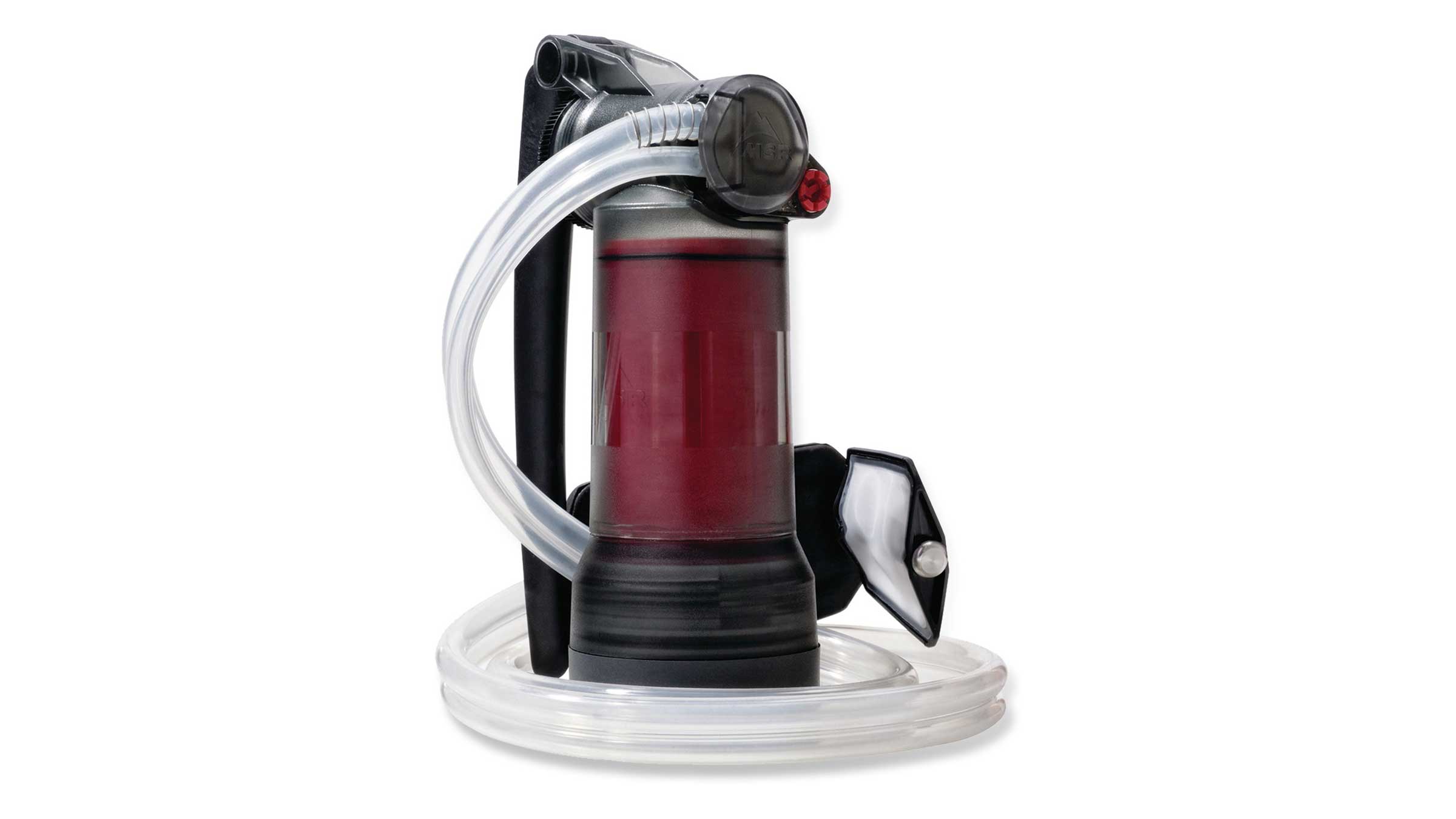
Best for Really Bad Water
MSR Guardian Purifier
Weight: 1 lb. 1 oz.
Pros and Cons
⊕ Filters viruses
⊕ Self-cleans
⊕ Very fast
⊕ Freeze-proof
⊗ Heavy
⊗ Expensive
Let’s say you treat 100 liters of water a year in the backcountry. That’s a lot—at least 25 days of backpacking, in most conditions. Now let’s say you have a partner, and you filter water for them, too. So 200 liters a year. At that rate, the Guardian’s filter will last 50 years with zero cleaning.
Normally, we try to avoid clogging water filters at all costs. When gunky water gums up some filters, they’re done, and even models that can be cleaned are a hassle to maintain when water is really bad. But during trips on which we pumped some 1,000 liters, from the silty Colorado River to Turkish ponds filled with moss, mud, and goat poop, we couldn’t get the Guardian to clog. How does it work? With every stroke of the pump, 10 percent of the water backflushes the filter, so it’s self-cleaning. We never detected any slowing of the flow (it’s fast, about two liters per minute). “The lever handle is way easier to use than traditional pump-style handles,” said one tester.
The hollow-fiber filter is unusual in two ways. First, it eliminates viruses in addition to other pathogens (rare for this type of filter). Second, it can withstand freezing temperatures (down to 0°F) without damage. Credit that cold-proofing to the filter’s unique physical and chemical makeup (in other words, it’s proprietary).
The fact that this model has hardly changed since its release in 2015 and is the only pump-style filter we consider to be worth the effort is a testament to how efficient and well-designed the Guardian is. (That’s not to say it couldn’t use an upgrade; it’s notorious for leaking when overtightened.) There are certainly lighter, more compact, and cheaper options available, but if you want to clean bottle after bottle of the world’s gunkiest water, this is your filter.
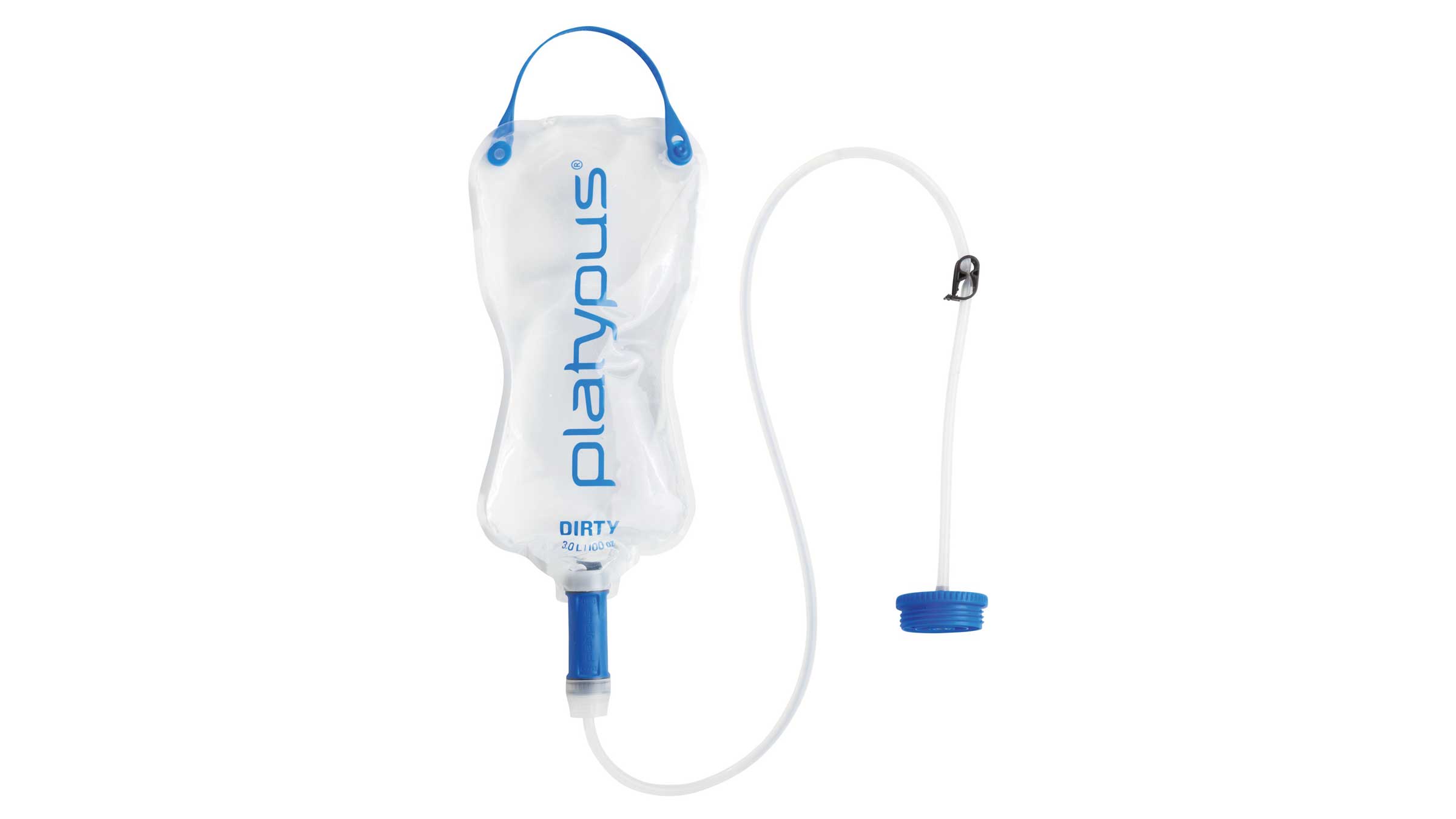
Best Gravity Filter
Platypus QuickDraw 3L Gravity Filter
Weight: 8.2 oz
Pros and Cons
⊕ Durable
⊕ Easy to handle when wet
⊕ Large capacity bladder
⊕ Dual-purpose
⊗ Lots of small caps
⊗ Short lifespan
Platypus’s QuickDraw filter has been a Backpacker favorite since its debut in 2021 for its compact size and fast flow-rate (as a squeeze filter, it comes in at a close second to the HydraPak 42MM Filter Cap.) The brand’s larger three-liter bag and QuickDraw filter combo (it also comes in a two-liter option) is the most versatile configuration yet, with a setup that transforms into a gravity system and includes attachments for many different drinking vessels.
The 3L Gravity Filter scored major points with our team for its ease of use and ergonomics. Critical for a bag of this size, it’s easy to grip and hold when wet, thanks to a small handle near the collection mouth. (On the flip side, we found the 35-millimeter-wide mouth to be a tad small for filling in lakes and streams.) Our team also liked the larger, removable thermoplastic polyurethane strap at the other end, which makes hauling and gravity hangs easy and doesn’t absorb water like most nylon versions. While the outer layer of the three-liter bag is a soft, pliable polyurethane—as is the case with many competing products—Platypus uses a polyethylene lining to minimize the plasticky taste often associated with hydration bladders.
Platypus includes a universal bottle adapter connected to the quick-connect hose, which is compatible with wide-mouthed vessels like Nalgenes and standard Smartwater-type water bottles. Some misses in the adaptability department? In gravity filter mode, standard water bottle mouths are connected only with a “press-fit,” as opposed to threading, which we felt was not sufficiently secure during filtering—although you can screw the filter directly onto a 28-millimeter bottle in “squeeze mode”—and three separate caps for the filter and adapter were a lot to keep track of.
As is consistent with other configurations of the QuickDraw filter, it never clogged on us during the testing season in Washington State, even after two testers ran an estimated 150 liters through the filter—including a hefty dose of silty glacial runoff. That said, the claimed lifespan is very short, limping in with a measly 1,000 liters, while its closest competitor has double the longevity.
At just over eight ounces and approximately the size of a typical burrito when rolled up, the whole setup easily packs away on day hikes and overnight trips. For larger groups, Platypus still makes four- and six-liter versions of its older GravityWorks filters, but they are limited to gravity filtration and lack many of the new system’s features. All in all, the Quickdraw 3L Gravity Filter is an ideal setup for hiking in small groups and occasional solo trips.
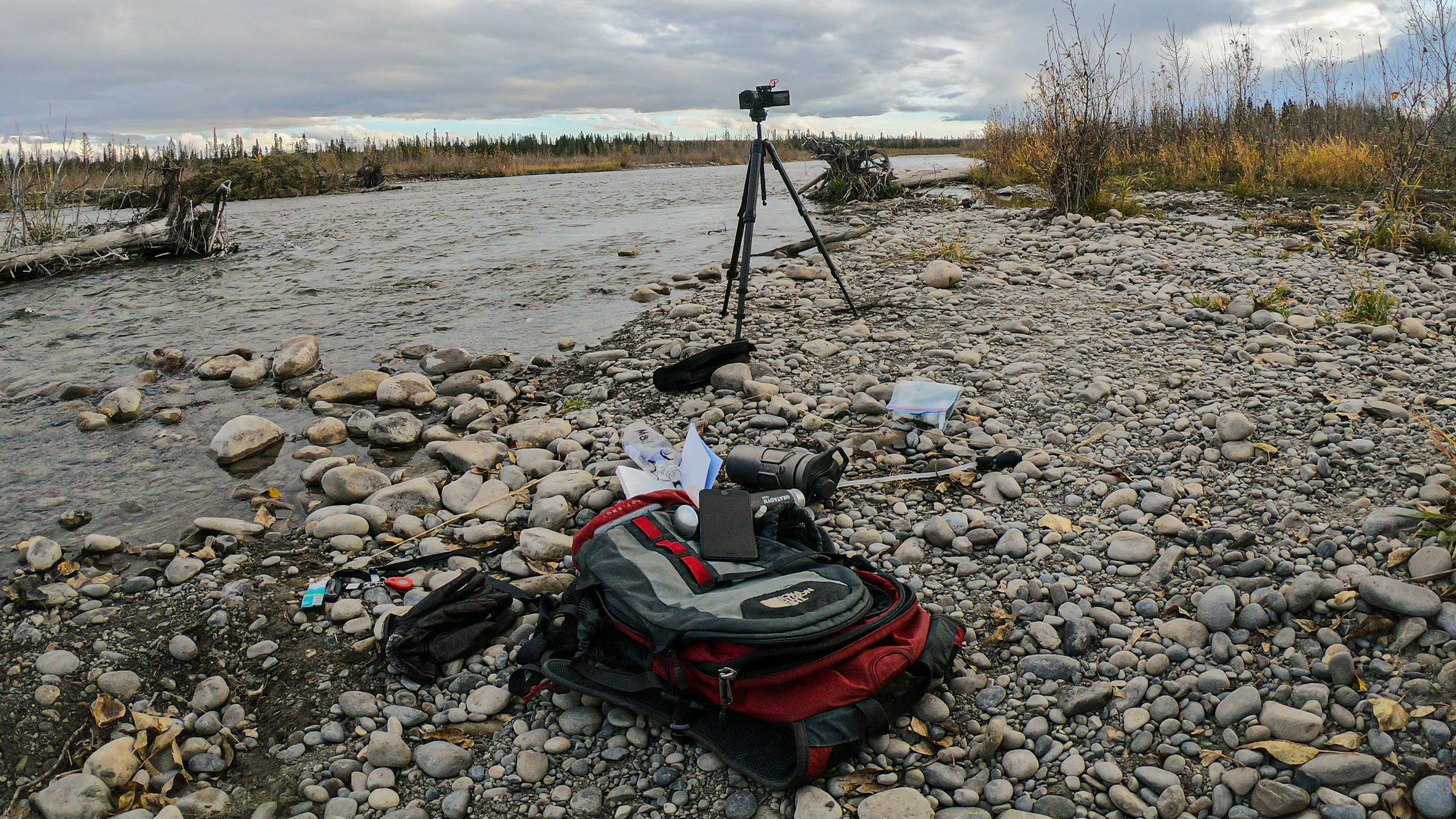
Other Products We Tested
The Sawyer Squeeze, Mini, and Micro ($29-46): No water filter test would be complete without a thorough vetting of the Sawyer Squeeze, one of the original hollow fiber squeeze filters and a near-ubiquitous sight on thru-hikes across the country. The Squeeze is a solid water filter across the board, with a reliable design, high output, long life, and a fair price and weight. Where it lags behind is in its mylar bag design, which can be sharp and uncomfortable to squeeze and is prone to tears near the neck along the welded seams. (Ed Note: Sawyer recently released a new, improved bag design, which we are currently testing.) It also requires that you carry a syringe for backflushing (and a coupler for best results), adding bulk and some modest weight. The original Sawyer Squeeze is a fine choice and is sold in nearly every sporting goods store and Walmart in the country. That said, it’s not our favorite filter for any one particular metric. Both the Sawyer Mini and Micro, which are very small and lightweight (the Mini is a scant 1.8 ounces!), lag well behind the regular Squeeze in terms of clogging speed and filter rate. They do make good emergency filters, however.
Katadyn BeFree ($27): Our former top pick for squeeze filters is still an excellent choice. The Katadyn BeFree is similar in function and design to the HydraPak 42mm filter, with the same water bottle compatibility, very fast filtration times, a 2.1-ounce weight, and easy in-field cleaning. However, its mouthpiece design isn’t as secure, comfortable, or durable as the Hydrapak, and the flow/clog rates lag just behind it as well.
MSR AutoFlow XL ($125): If you need a filter that can handle a lot of people and abuse, this is it. The AutoFlow XL pairs a hollow-fiber, 0.2-micron filter with a 10-liter reservoir, the largest in the test. While it scored below the Platypus Quickdraw 3L in several metrics, it’s still an excellent gravity filter.
Katadyn Steripen Ultra UV ($130): The Steripen was once a commonly used piece of equipment on-trail and for international travel for its ability to destroy viruses (it’s a UV purifier, not a filter, meaning it doesn’t remove sediment.) In the last decade, however, it’s become a bit of a relic. It hasn’t been updated in many years, and that’s apparent in the high failure rate and non-serviceable battery. If this thing fails in the backcountry, you’re out of luck and stuck with an extra five ounces of dead weight. For travel, we recommend a Grayl press-filter instead.
HydroBlu VersaFlow ($23): The HydroBlu VersaFlow is a Sawyer Squeeze Mini lookalike, with very similar form and function. It’s marginally cheaper than the Mini, but has a slightly slower flow rate and doesn’t come with a backflushing kit.
Platypus DayCap ($45): We found the DayCap to be incredibly easy to use—just screw it right onto a Nalgene and you’re ready to go. Plus, the filter itself can be unscrewed and replaced with a new one without needing to buy a whole new cap. Unfortunately, the slower flow rate made sipping a challenge.
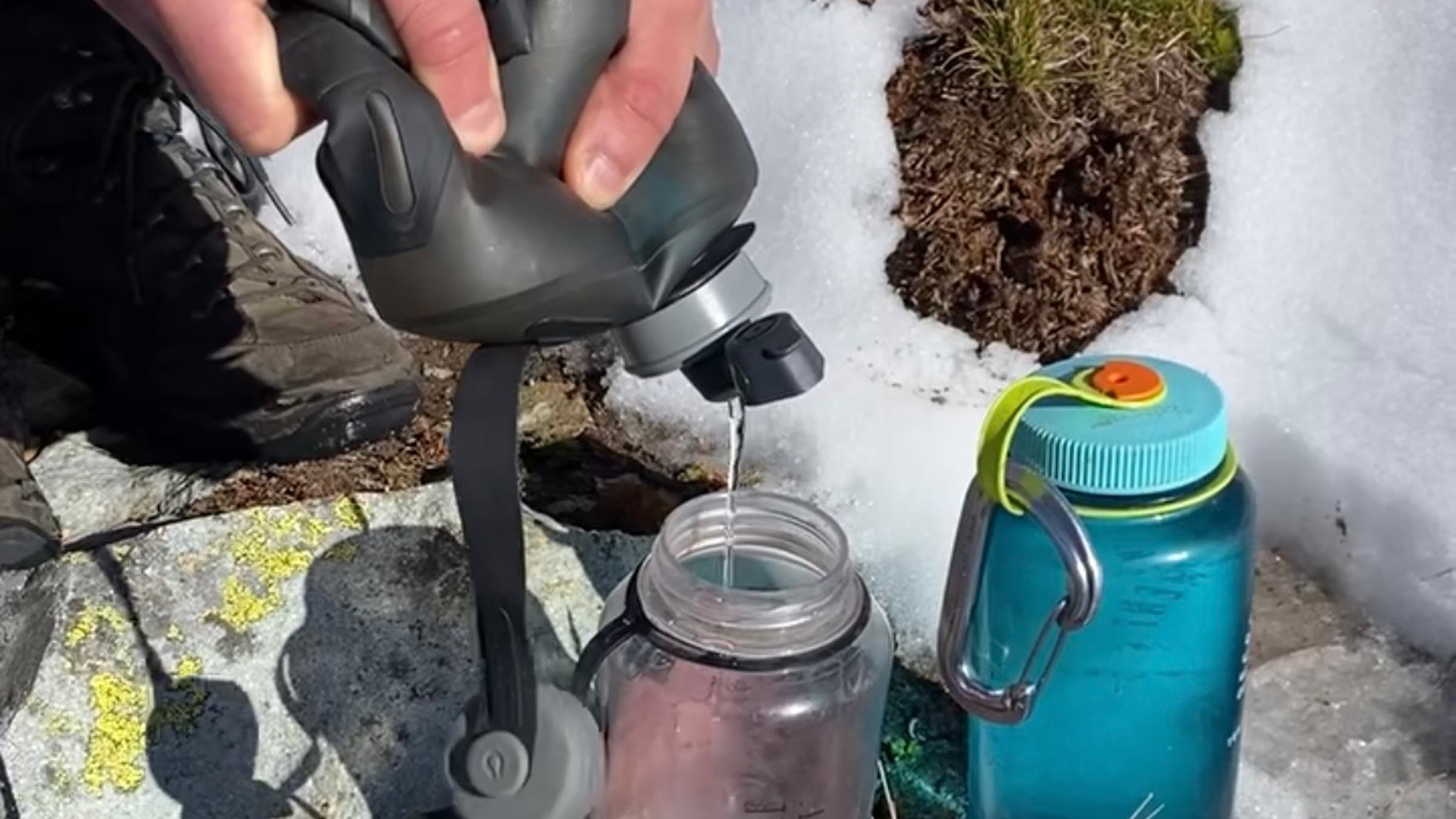
How We Test
- Number of testers: 10
- Number of products tested: 31
- Number of liters filtered: Hundreds
- Dirtiest water source: Silty, muddy streams in Vermont’s Green Mountains
Our team of ten testers and a handful of Backpacker editors evaluated a total of 31 filters across a variety of water sources to find the best options for this season’s gear guide. We tested in clear alpine lakes and glacier-fed streams at Mt. Baker in the Snoqualmie National Forest and the Alpine Lakes Wilderness, muddy streams in Vermont’s Green Mountains, creeks in the Canadian Rockies and Jotunheimen National Park in Norway, dirty snowmelt at Mt. Adams in the Cascade Mountains, and clear waters in Alberta. We looked at key filter variables, including flow rate, ease of use, packability, durability, weight, and functionality in order to choose the very best.
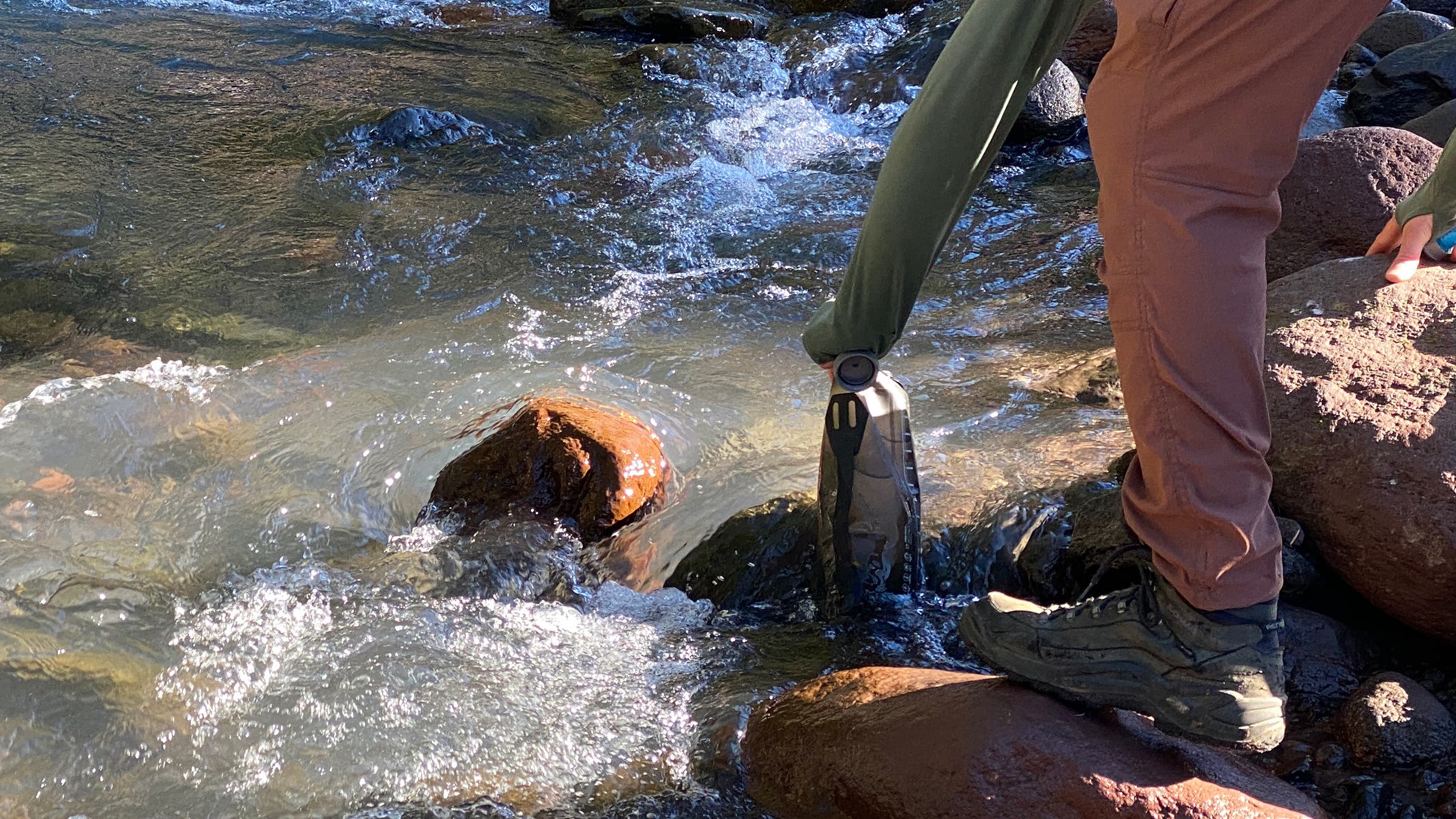
How to Choose a Water Filter
When selecting a filter, the main factors are the number of people you’ll be traveling with, the number of days you’ll be hiking, your weight constraints, and how dirty your water sources are likely to be. With those considerations in mind, these are your options for backcountry filtration styles:
Squeeze/Straw Filters
For an adventure with just one to two people, a squeeze or straw-style will get the job done quickly through the simple mechanism of pushing dirty water through a hollow-fiber membrane. That pressure either comes from crushing a reservoir with your hands or sucking directly on a “straw-style” filter to pull the water through. Some of our favorite squeeze/straw filters make for excellent backup filters thanks to their light weight and water bottle compatibility.
Gravity Filters
Best for larger groups, these filtration systems let gravity do its thing via one long hose and two large reservoirs (or water bottles.) When you’re filtering more than three liters of water at a time in camp, passive filtration can be a godsend.
Pump-Style Filters
We think of pump-style filters as “last-gen” tech: The pump end screws onto your water bottle while an intake hose dangles in the water. There are many downsides to pump-style filters: They’re tiresome to use, complicated to clean in the field, and heavy. The one exception to this is the MSR Guardian Purifier, which backflushes as it filters and can handle viruses as well as bacteria and particulate matter.
Press-Style Filters
There are only a few models of this type, and they’re all from one company: Grayl. Push a filtration cartridge directly into the bottle and you’ve got safe drinking water in just seconds. The downside? The bottle is relatively heavy, has a limited capacity, and requires a good amount of body weight and/or force. It’s best for travel and day trips.
Inline Filters
These sit between your bladder and your drinking hose and are the fastest way to filter water if you use a bladder system. Simply fill your bladder at a water source and hit the trail: just like with a straw filter, you’ll suck water through the inline filter on your drinking hose without having to stop and squeeze. The downside? You have to dig your bladder out of your pack every time you want to stop and fill up.
UV-Based Purifiers
UV-based purifiers (which kill bacteria and viruses, but don’t filter particulates) can be a quick and easy option if you’ll be near sources of clear water. They’re also a common piece of equipment for international travelers where viruses are a concern.
Chemical Treatment
Chemical treatments, like Aquamira drops, are an affordable, lightweight way to purify water. However, they take roughly 30-40 minutes to be effective, impart an off-putting taste to drinking water, and don’t provide any filtration for particulate. For just a bit more money, you can buy a cheap, squeeze-style filter.
Meet Our Testers
Dan Hu grew up in Hawaii and has lived in Washington State since 2013. A healthcare professional by training, he spends his free time hiking and backpacking in the Pacific Northwest and writing about his adventures.
Danny Veenhouwer is a pharmacist who spends his time hiking and backpacking in the Olympics and Cascades with a particular interest in fossil hunting.
Laura Behymer and Brian Call are a pair of physical therapists based in Olympia, Washington. In their spare time they can be found bike-packing, hiking, and mountaineering.